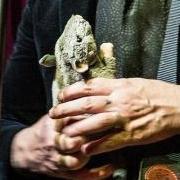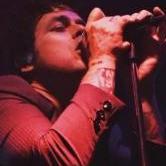Leaderboard
Popular Content
Showing content with the highest reputation on 12/10/2019 in all areas
-
I'm all for people having opinions, but pretending you know how much effort a band did or did not put into a song is pretty fucking stupid. You can like it, you can dislike it, you can feel the quality of the writing is or is not high for your personal standards, but to pretend you know how much effort they put into it is entirely incorrect. Plenty of bands put a lot of effort into writing music that I end up disliking. Just because it does not meet my subjective, personal standards does not mean they did not put effort into it.7 points
-
^^* I would say this big label popcore experiment worked out pretty well for Green Day 😁5 points
-
Looks like this is an old article from 1993 republished and came up on my Twitter (not sure if it's been posted before): http://magnetmagazine.com/1993/10/13/punk-in-silk-pajamas-jawbreaker-green-day-and-j-church/ PUNK IN SILK PAJAMAS: JAWBREAKER, GREEN DAY AND J-CHURCH Popcore grows up and out by the San Francisco Bay. By Jamie Kensey Punk rock wasn’t supposed to be like this. All love and hope, heartstrings and dreams, melody and ache. All shucks and gee whiz. Punk was obnoxious, blaring, political. Fuck you. The Ramones were loud, snotty and rebellious. The Germs were loud, snotty, rebellious and suicidal. Black Flag? Yep, loud and pissed. And San Francisco’s Jawbreaker is … uh, sometimes they’re loud. Listen up, kids, it’s popcore: churning melodic guitar lines, songs not chronicling our fucked-up world but about our personal demons, friends, family and the inconstancy of daily existence. It has a solid punk core but spreads into all territories of rock, soul and folk without losing its power. Descendants include bands like the Buzzcocks and, well, the Descendents. And the San Francisco Bay Area has almost singlehandedly kept it alive recently, with Jawbreaker and a handful of lesser-known bands continuing the revolution. They still wield a fist, albeit a velvet-gloved one. “When we started, I had these illusions of being a real art band,” says Jawbreaker songwriter and guitarist Blake Schwarzenbach. “Because of my lack of skill, it ended being punk songs mostly. I really had these ideas of going on noise segments and doing these celestial guitar things.” The great thing about this revolution is that it’s undefinable. Popcore units aren’t always strictly pop or hardcore. And though they all share a common punk denominator, they scatter in many directions from that starting point, kinda like a pack of huddled roaches when you hit the light switch. Even with the current stigma attached to the “p” word, most of them don’t even mind if you use that as a convenient label for their sound. “They can call us whatever they want, they’re still going to hear us,” says Schwarzenbach. “Nowadays, there are so many different styles being played in this underground scene,” drummer Adam Pfahler clarifies, “that if a band considers themselves punk, they are basically talking about the way they do business.” Jawbreaker is a model example of Pfahler’s definition. The band is a classic case of DIY: What you see is what you get, right down to the band’s explanation of why you won’t see Jawbreaker on a major label. “It wouldn’t work,” says bassist Chris Bauermeister. “The way we’ve got it now (with Communion/Tupelo) is too easy.” “[The majors] treat you like idiots,” adds Schwarzenbach. “They send you this hypothetical contract … But you’d have to sell 100,000 records to make any kind of money.” “Jawbreaker is now a hit-or-miss thing,” says Bauermeister. “I wouldn’t want to bank on the fact that we’re going to sell six albums over the next seven years. I think that’s unrealistic, and the labels realize that and try to screw you.” “I don’t begrudge any band that signs,” says Pfahler. “I just worry about them, because I’m afraid of big business, as we all are.” Jawbreaker’s “least likely to jump ship” status remains intact because of the band’s work as well as its beliefs. The band relishes its status as one of the darker popcore units. Bivouac, the band’s 1992 release, has 13 rough-hewn gems (hooks and introspection intact), all filtered through Schwarzenbach’s gravelly, unkempt voice and a pensive rhythm section that mopes through half the tracks and throws sparks during the rest. And the best part? It shakes your hand instead of punching you in the gut. Schwarzenbach promises the new album, 24 Hour Revenge (recorded by Steve Albini and due out this winter), will be even more direct in its approach. If Jawbreaker is the popcore holdout, representing the true underground because of its refusal to sign with a major, Green Day (pictured) might be considered the flip side of the coin. Still relatively young, the college-aged trio is a few months into a healthy contract with one of the biggest corporate labels in the world: Warner Bros. With the majors desperate for another Nirvana, it was only a matter of time until they came to the Bay Area knocking on popcore’s door. Green Day has taken the bait and will be the guinea pigs in the experiment to test this genre for mass consumption. Green Day guitarist/vocalist Billie Joe and bass player Mike (none of the members uses last names) have been bashing away since sixth grade. Drummer Tré was recently recruited when original member John left for college. Early on, Green Day, composed of Berkeley-area natives, found itself at Gilman Street, the now-famous, volunteer-run punk venue that continues to be the only hall in the Bay Area where new punk and art bands can get a start. Green Day made its name at Gilman. Ironically, the band was originally turned down for not being punk enough. But when younger volunteers took over, the band got its chance and quickly scaled the ranks of the tightly knit Gilman scene, which often ghettoizes its bands. Their major-label deal breaks it from the ranks somewhat, but all band members still hang out there and consider it an integral part of their upbringing, though the trio is reluctant to mention it in the press for fear of overexposure. “If our record with Warner Bros. goes to a bigger level, I want to try and stay clear of mentioning the place very much,” Billie Joe explains. “Because there is an underground that should be made for only underground purposes. It was our choice to go to a major, but there should be some sort of element to music where the big bucks, the big corporations, should have nothing to do with at all. That’s one thing that really fucked up the whole Seattle scene. As far as Gilman Street and the scene around it. It’s just really genuine. It should be left alone. I don’t want to exploit it.” The band’s biggest challenge right now is to find an identity on a label that hypes everything from Madonna to My Bloody Valentine. The band insists Warner is not putting its hand in the cookie jar. “It all really depends on how we present ourselves,” says Mike. “I want to keep a low profile, just have them put out our record and kind of mention it and what [music] goes along with it.” Green Day’s biggest worry is what the signing is going to bring the band in the future. “To tell you the truth,” says Billie, “I’m really fucking scared about the whole thing. We’re probably gonna make a video. I’ve been watching what is going on with MTV … with this ‘Alternative Nation’ thing, and the channel is pathetic. We have no place on it … I would almost rather say I don’t want to be on the fucking thing. I’m really torn. If we could just do it and get over with it, I’d be really happy.” The Green Day test flight will commence sometime in early ’94 when Warner Bros. releases the as-yet-untitled (but already completed) album. In the meantime, popcore stalwarts J-Church are devising their plans for world domination over in San Francisco’s predominantly Hispanic barrio, the Mission district. The Mission is a world of its own, both a brightly hued cultural panorama and a grim, dark patch of the city filled to the brim with crime-riddled, low-income projects, big-time gang turf wars and serious trash problems. Live there for any period of time, as two-thirds of J-Church does, and you’ll gather more than enough experiences and tales as fodder for your art. The band’s recent LP, Quetzalcoatl (named for the Aztec god), is littered with Mission references and tells of the love-hate relationship it has with its neighborhood. “Sometimes it’s more hate,” says vocalist/guitarist Lance (J-Church’s members also don’t use last names). “It’s really crazy, but on the other hand, it’s my favorite neighborhood. Everything that I do is here … I just like the mix of people and everything. Plus it’s really cheap to live here. That’s the main thing.” Quetzalcoatl is probably the most ambitious of the current crop of popcore releases. Lance wraps lines like, “But to you, the last Hüsker Dü must have been something cathartic,” around the muted, almost pathetic rhythms of bassist Gardner and drummer Brendan. Sometimes they pick up speed, but they often give up and collapse under the unwieldy moodiness of Lance’s meanderings. Of course, it all has a hardcore heart, but Lance’s many influences make appearances. “Even punk rock I don’t listen to that much anymore,” he claims. “There are still my favorites, like Rites Of Spring. But most of the stuff I’ve always listened to has been more like the Velvet Underground, Jonathan Richman .. I also like other things like Cheap Trick, Neil Young.” If Jawbreaker is the anti-corporate hero and Green Day is the big-business experiment, J-Church falls through the cracks somewhere in between, although the band has been approached by the suits all the time. “I think labels are moving in on the Bay Area right now,” says Gardner. “I think they’re hoping it might be the next Seattle.” “We will consider anything,” says Lance, “but at the same time, we are pretty loyal to John (Yates, a close friend and head of the band’s label, Allied).” One of J-Church’s conditions would include the new suitor buying out the band’s current contract with Allied. “We are pretty wary, because I know so many bands that have been screwed by major labels,” says Lance. “My main concern, though, is not to screw over John or anyone who have worked their ass off to help us.” “I don’t want to be a star or anything like that,” says Gardner. “I think that is so ridiculous.” “If we got to where Green Day is now,” Lance agrees, “that would be fine. We wouldn’t have to go one step further than they did.” It’s going to be interesting charting the directions in which this scene will wander. Will the suits descend on the Bay Area, gobble it up, water it down and ruin it by attaching some generic label like “the new Seattle”? Or will the scene dig its heels and remain vital and doggedly independent by burrowing further underground? Green Day remains the only big signing; scene grandaddies like the Mr. T Experience are still toughing it out on small indies after nearly a decade. And the current crop has given rise to more young upstarts like Tilt, who, true to the popcore maxim, are searching out new avenues rather than traveling well-worn roads. You might say there’s a genuine movement in Northern California, and I’m sure more scholarly scribes would try to attach some blustery dissertation. Since I’m not that smart, I’ll just simplify it and say this: It’s about here and now. Punk has always been direct, no nonsense, real. Popcore is just a new branch on its tree, adding life and color. It’s a non-apologetic look at the other side of pissed and proud, the composed and confused. And units like Jawbreaker and J-Church prove its signs are vital and good. Despite Green Day’s signing, current indicators point to an avoidance of the nefarious Seattle hype trap. Make sure you keep your fingers crossed and your hardened punk heart aflutter with those aggressive, sticky-sweet melodies.4 points
-
I was just scrolling through dozens of Green Day's live videos and decided to finally click on this. I've always thought it was just some fan made music video for Murder City, but it turned out to be pro footage live version of that song. If I understood it right, it was posted on Green Day's own website. How cool it would be to get clips like this from Trilogy's songs? Especially Lady Cobra, Lazy Bones and Angel Blue deserves to have professional footage.3 points
-
This is a format that we're gonna see often. It's got it's pros and cons for sure. I'll love seeing GD at a larger venue but I'd love for them to come back next time for a dedicated GD tour even if it means a show in a hockey arena.3 points
-
3 points
-
I mean everyone knows at this point that writing 21CB was long overdue and huge stress so it would make sense that The Boys™ didn't want to stress about making albums anymore. What I don't understand at all is that they put so much effort for that album (more than in anything else) and didn't even celebrate its 10th anniversary. Of course, Dookie 25 is going on, but 21CB 10 would've been better. @Little Boy Named Airplane Hahah I'm glad I heard it back in 2013 and after seeing setlist.fm statistics for that song (after 21CB Tour ended), I consider myself lucky as fuck to hear it even once.2 points
-
Billie and Longshot have posted this article about Murray Bowles to their IG stories: https://www.kqed.org/arts/13871151/murray-bowles-legendary-bay-area-punk-photographer-dies-at-68 Murray Bowles, Legendary Bay Area Punk Photographer, Dies at 68 Murray Bowles, the photographer who chronicled the characters, chaos and energy of the Bay Area's punk scene for over three decades, died at his home in Sacramento on Sunday. He was 68. Often seen in the middle of swirling crowds, one arm lifting his camera into the air, Bowles created tens of thousands of images that captured the close-up intensity of a punk show. Many of his photos became defining images, particularly in the East Bay punk scene, and his photos graced magazines, record artwork and film documentaries. “One of the great rites of passage of being a teenage Berkeley punk rocker was finally getting into one of Murray's pictures,” said close friend Anna Brown. “It meant that you were in.” Bowles photographed thousands of bands, including many at Berkeley punk club 924 Gilman during the 1980s and 1990s. Along with bands like Crucifix, Filth, Crimpshrine and Fang, some of Bowles' most iconic early photos capture young bands that went on to become globally known, like Operation Ivy, Neurosis, and Green Day. But Bowles preferred the warehouses and basements. Murray Bowles depicted on the cover of Green Day's album 'Dookie.' (Richie Bucher) “He was right in there with the gritty basement shows, with kids, just sweaty, wild and free,” Brown said. “And I think that one of the things that's so great about Murrays' pictures is that sort of joyfulness. Even if was the most violent, negative band, the pictures came across as really sweet.” Bowles was such a ubiquitous presence at Bay Area punk shows that he was included by artist Richie Bucher on the cover of Green Day's 1994 breakthrough album Dookie, in his signature point-and-shoot pose. “For me, he's the most important part of that drawing,” said Bucher. “I don't know if I thought about it at the time, but I realize now that by putting him in there, I'm not leaving anybody out. Because everybody from our scene could connect to him.” “Murray, you are a legend,” wrote Green Day's Billie Joe Armstrong on Instagram on Monday. “I remember seeing your photos up on the walls at Gilman the first time I ever went there. Amazing photographer, musician. The nicest man and a great friend to the punks. East Bay punk has a heavy heart today.” Questions about the future of Bowles' archive seem to have already been addressed. Brown said that, with Bowles, she's planned for decades to publish a book of his photographs, a project she still hopes to see to fruition. Bowles selected all the images before he died, and helped with an outline for the presentation of photos. Corbett Redford, director of the documentary Turn It Around: The Story of East Bay Punk, said that having access to Bowles' archive was a crucial component to the film. “He was so generous to give [his archive] to us. We would not have a documentary if it was not for him.” It was through the making of Turn It Around that 25 years of Bowles' photos were finally preserved. Redford tells the story of driving to Bowles' San Jose home with fanzine editor Robert Eggplant and Tim Armstrong from the band Rancid. There, the three went through decades of old photos and negatives. “It was all gathering dust in his closet—30,000 negatives that were pretty disorganized,” Redford said. The three loaded all of Bowles' negatives into the trunk, and drove back to Oakland to be cleaned and digitized over time by Caoimhe Carty, a production assistant. “When I was driving back, I had what I felt was the Tiffany Diamond in the trunk,” Redford said. “I kept thinking, 'Please don't get in an accident. If I do, the entire history is gone.'” Bowles was raised in San Gabriel, California, and learned photography from his grandfather. Upon graduating from UC Berkeley in 1976, he found work as a computer programmer in San Jose, but an assignment to photograph a show for the fanzine Ripper got him hooked on the action of punk. “I started bringing my camera to every show I went to,” he told Maximum RocknRoll in a 2009 interview. “It was addictive.” Bowles initially distributed his photos by bringing a box of them to shows and selling them for 15 cents each to cover development costs, eventually raising the price to a quarter. It became a tradition among punks to scrape together change and buy pictures of themselves at shows from the week prior. In 1987, Maximum RockNRoll published a special issue dedicated to Bowles' photography, titled If Life is a Bowl of Cherries, Why am I in the Pit? Later, Bowles maintained an active Instagram account, posting pictures from shows along with his other hobbies: food, beer, bicycling, nature. He also played the viola for several bands, as well as the Peninsula Symphony and the occasional theatre pit orchestra. He worked for Dell Computers until his retirement, when he moved to Sacramento. There, Brown says, he continued to go to underground shows up until the end, always taking photos. “He really captured this side of punk that was not cliché,” Brown said. “He really got it.” Matt Saincome, founder of the punk satire site The Hard Times, remembered Bowles for his commitment and tenacity. “The thing that I remember the most about him, my friends and I, we threw a show at a barn in Clayton when I was 16,” Saincome said. “There were 12 people there, out in the middle of nowhere, up this mountain, it didn't even have an address. Absolutely no one came. No popular bands. And all of a sudden, Murray popped up! It's me and 12 of my friends, and then him... His dedication to punk went so far that he wasn't just going to a couple venues here and there. He said, 'I'm gonna drive up this mountain in Clayton to a barn with cows and chickens.'” They've also posted this to their story:2 points
-
Some of Murray Bowles photos from Green Day's IG story (think I missed a few there were so many!) RIP2 points
-
2 points
-
Murray Bowles, Legendary Bay Area Punk Photographer, Dies at 68 https://www.kqed.org/arts/13871151/murray-bowles-legendary-bay-area-punk-photographer-dies-at-68 Bowles photographed thousands of bands, including many at Berkeley punk club 924 Gilman during the 1980s and 1990s. Along with bands like Crucifix, Filth, Crimpshrine and Fang, some of Bowles' most iconic early photos capture young bands that went on to become globally known, like Operation Ivy, Neurosis, and Green Day. But Bowles preferred the warehouses and basements. “He was right in there with the gritty basement shows, with kids, just sweaty, wild and free,” Brown said. “And I think that one of the things that's so great about Murrays' pictures is that sort of joyfulness. Even if was the most violent, negative band, the pictures came across as really sweet.” Bowles was such a ubiquitous presence at Bay Area punk shows that he was included by artist Richie Bucher on the cover of Green Day's 1994 breakthrough album Dookie, in his signature point-and-shoot pose. “For me, he's the most important part of that drawing,” said Bucher. “I don't know if I thought about it at the time, but I realize now that by putting him in there, I'm not leaving anybody out. Because everybody from our scene could connect to him.” “Murray, you are a legend,” wrote Green Day's Billie Joe Armstrong on Instagram on Monday. “I remember seeing your photos up on the walls at Gilman the first time I ever went there. Amazing photographer, musician. The nicest man and a great friend to the punks. East Bay punk has a heavy heart today.”2 points
-
2 points
-
When you get to this before Green Day do! Incidentally this is so cute! Green Day have made me soft in the head for unicorns!2 points
-
1 point
-
1 point
-
The top comment on this video is pure gold 😂 Billie looks so emo French in this video.1 point
-
1 point
-
Ya think 😂😂😂. Seriously, that was really interesting to read, thanks @Rumpelstiltskin20001 point
-
1 point
-
1 point
-
1 point
-
1 point
-
Few of Murray Bowles old photos of Tre from Green Day's instagram story: Don't think I've ever seen the first one before1 point
-
1 point
-
Wish I had high music IQ like you Man some people are stupid.1 point
-
Kerplunk>Dookie every day of the week for me.1 point
-
It's just a song title. There are plenty of good songs with dumb titles. Seems a bit harsh to judge an entire album off of this.1 point
-
You forget that some of us also bought an album that had the song “Dominated Love Slave” in it.1 point
-
So some conspiracy theorists have tried saying FOAM secretly is FHBT, but that's not true. Why? The Rev shares his beer. Billie doesn't.1 point
-
1 point
-
We definitely need another butt pic. He has his moments during Rev Rad but he’s on a different level of sexy with this era. ❤️❤️❤️ That second pic. And the last two.1 point
-
1 point
-
I just... Billie Joe stop being so darn good looking. I also really like this hair cut on him.1 point
-
Loving Billie's look at the AMA's! white jacket, light eyeliner. and his smile! this haircut is just1 point
-
Ok why the hell is Billie so damn pretty in those recent pics😭😭1 point
-
1 point

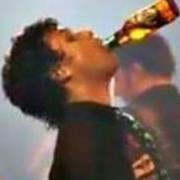
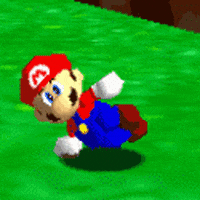

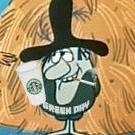

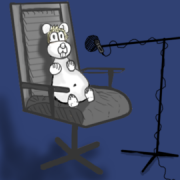


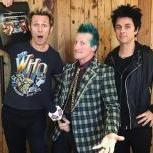

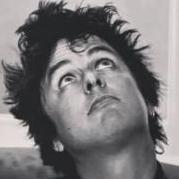
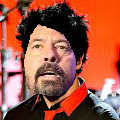
.thumb.jpg.d98d41f5682d98a67edc17eda301ca4a.jpg)

